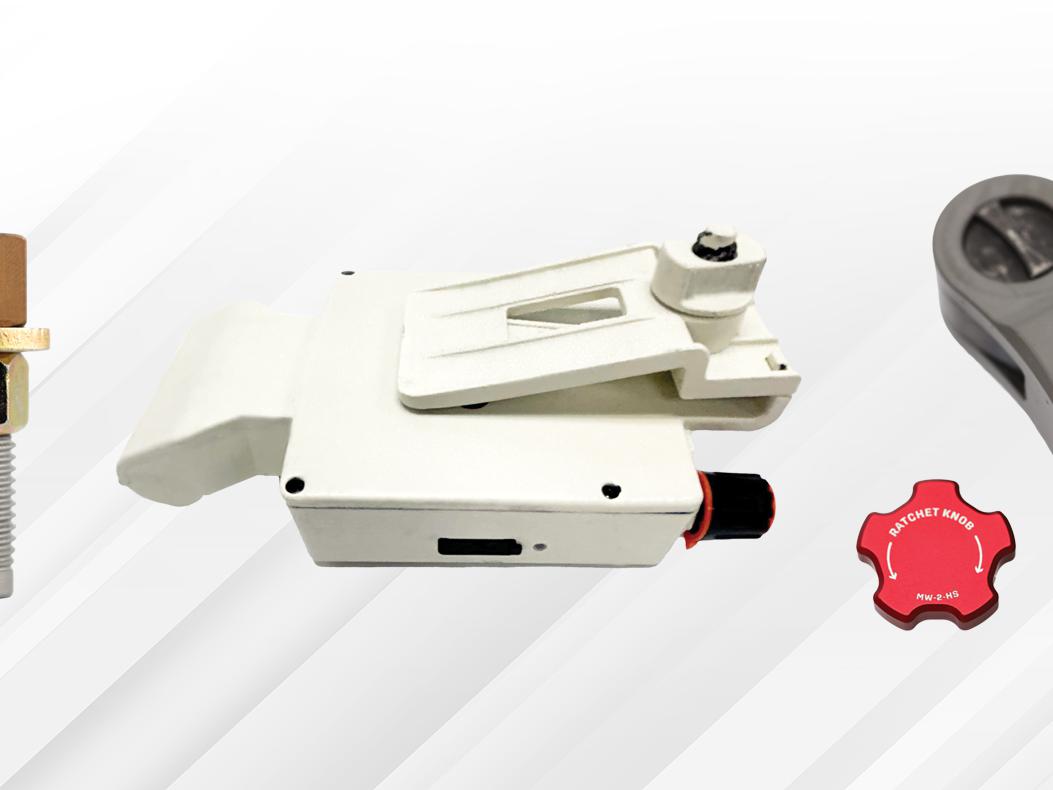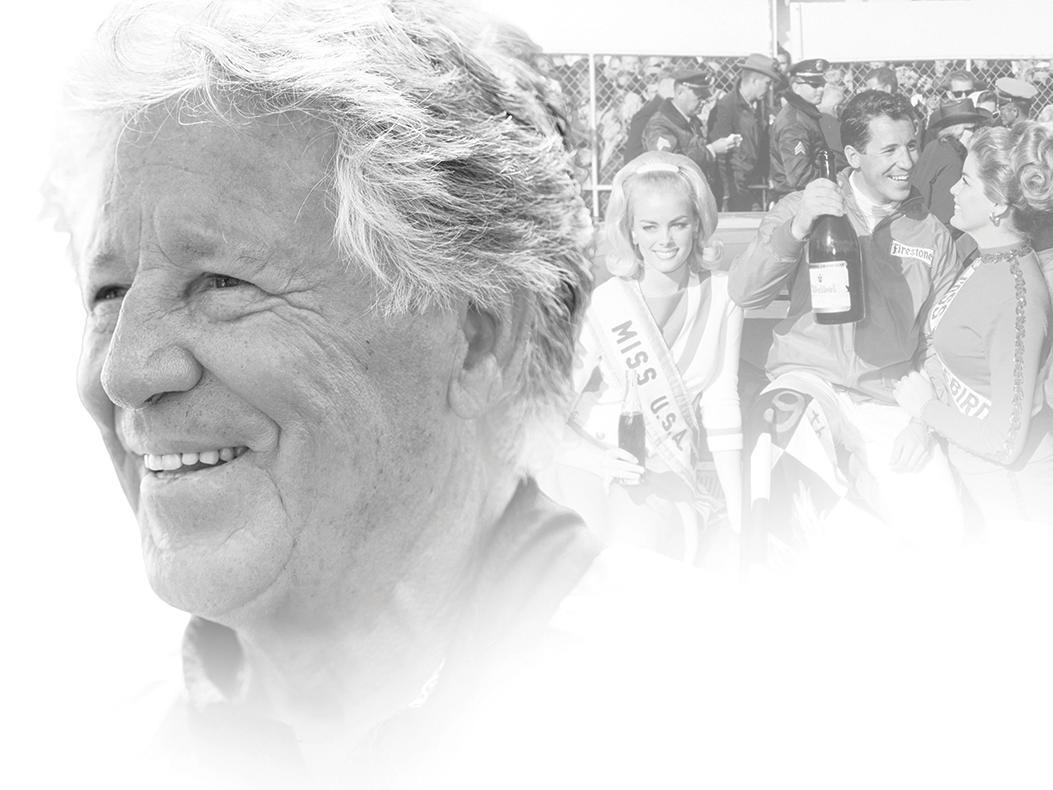PRI Education: Brake Kit Selection by Calculation & Experience
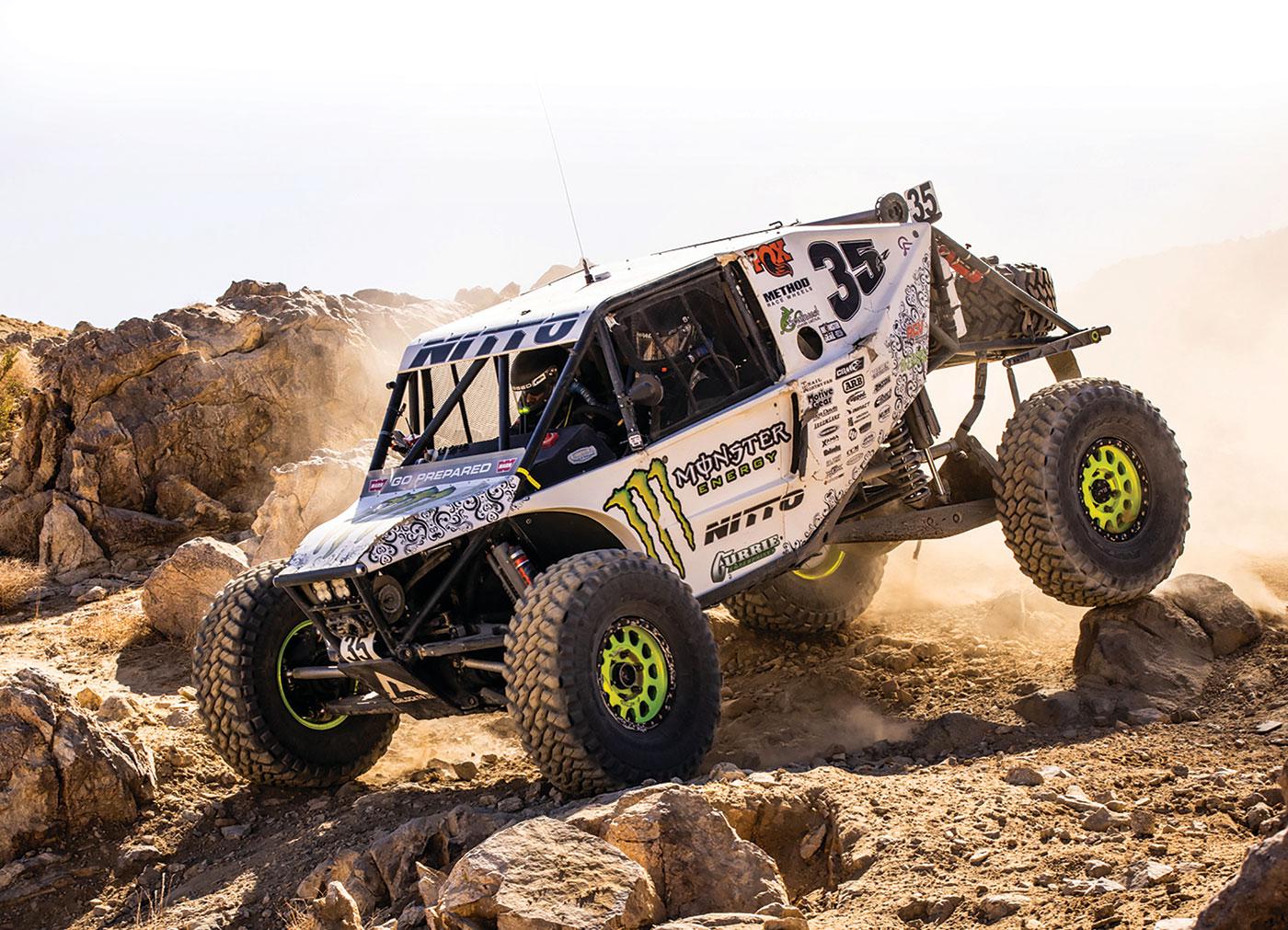
Bailey Campbell is shown here competing in the 2020 King of the Hammers Ultra4 4400 Unlimited class running a 50/50 brake bias with equal line pressure to all four corners. Wilwood recommends as close to a 50/50 front-to-rear brake bias as possible on these vehicles, so the calipers clamp with equal force.
Although components often look similar across different brands, engineering behind the scenes ensures parts are optimized for the unique challenges of each racing genre.
In racing, brake selection is often follow-the-leader: New competitors pay attention to what the top finishers are using. Some brake manufacturers do the same, so calipers and rotors often look similar across different brands. However, the manufacturers make plenty of engineering and metallurgy calculations behind the scenes before calipers get CNC machined or brake rotors cast.
The math involved in the initial planning of a brake system can get long and complicated. Variables involved in figuring front brake torque requirements include the coefficient of friction of the tires (think skinny drag tires versus road-race slicks), radius of the tires, weight of the car, wheelbase, height of the center of gravity, and distance from the front axle to the center of gravity.
Figuring how much brake torque a system can deliver, meanwhile, involves the coefficient of friction between the pads and rotors, rotor radius, and the clamping force of the calipers, which requires even more math involving the master cylinder bore, pedal ratio, caliper piston area, and caliper deflection. Then, engineers must determine the thermal capacity required based on kinetic energy, which is based on weight and speed but varies with the square of speed. A car going 150 mph has four times the energy of one going 75 mph, for example. Kinetic energy increasing by speed squared is one of the major factors pushing brake development.
Another consideration for brake kit selection is wheel size. For example, superspeedway stock cars with 15-inch diameter wheels turn a tremendous amount of kinetic energy into heat, but they don’t need to stop much and use brakes more to settle the chassis. NASCAR’s Next Generation cars have 18-inch wheels and a rotor that has grown more than 2 inches in diameter to handle increased speed on short tracks and road courses.
Tire grip figures prominently into brake engineering math, which is why dirt track cars and dragsters don’t use as serious of a front brake package as a Trans-Am series road racer. With a limited grip surface or narrow tires, brakes that are too strong just lock the wheels too easily. In these cases, the quality is more important than the quantity of the braking, so look for brakes with good feedback and predictable engagement to allow maximum braking without sudden lockup.
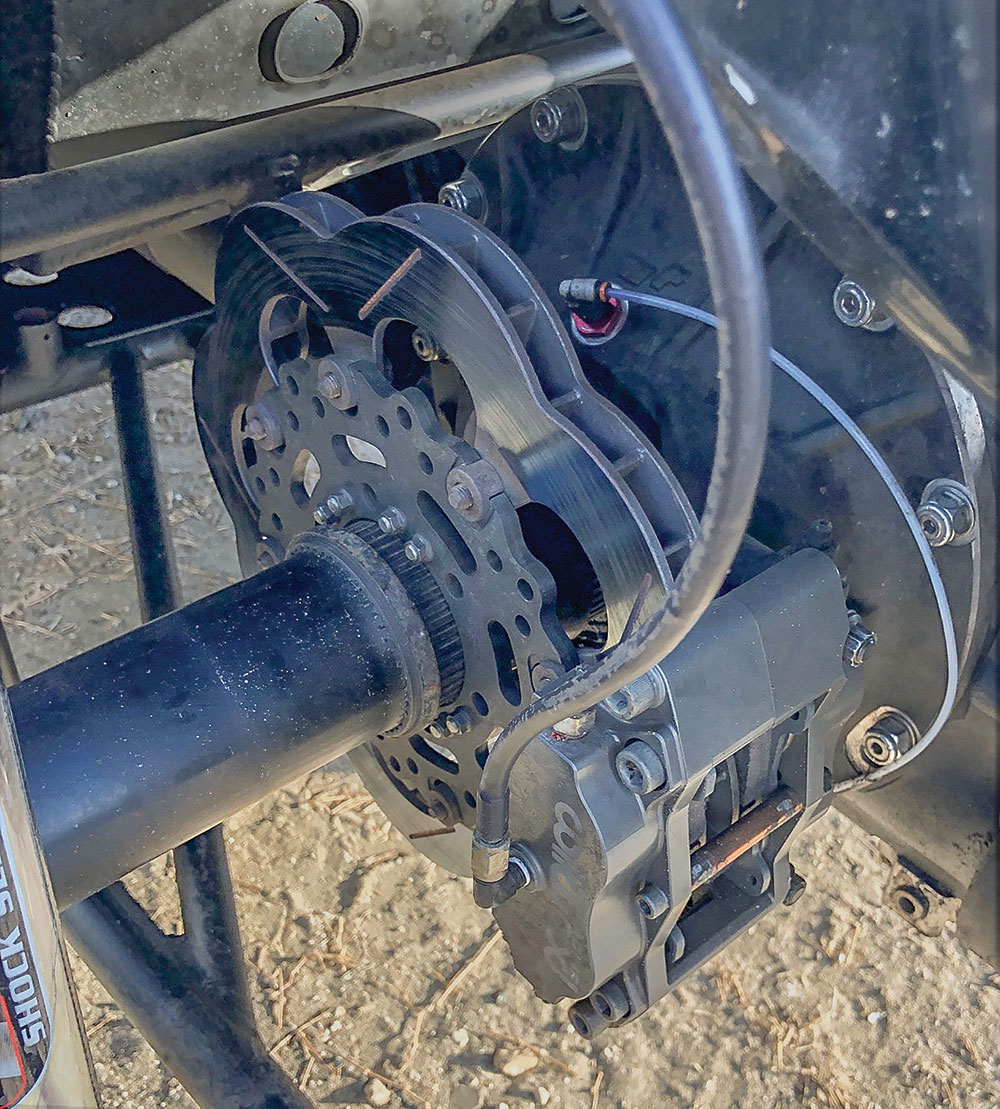
One Example with Ultra4 4400 Cars
These considerations for finding a proper braking package can be vital for preventing or rectifying race vehicle damage. One example of how brake selection fixed a significant problem was found in the Ultra4 series, the popular 4400 unlimited class that started at King of The Hammers. The locked all-wheel-drive, big tires, and high power of the 4400 cars left a trail of broken metal parts in their early days. Recurring driveshaft yoke failure on Miller Motorsports’ rigs was eventually traced to a brake bias setup that, while acceptable for most other forms of racing, proved detrimental in this unique off-road racing class.
Before we dive into that specific instance, though, let’s look at the unique needs of off-road racing. Speeds are typically slower (except when they aren’t), the grip is limited, weights are higher, the center of gravity and weight transfer are greater, and tire diameters are enormous.
Unlimited Trophy Trucks in Baja can easily hit triple-digit speeds, weigh three tons, and run tires up to 42 inches in diameter. Even with their braking needs lessened by limited grip on dirt, the combination of a high center of gravity, large tires, speed, and weight requires they use brakes that would also be at home on full-bodied GT road race cars. At the other end of the off-road spectrum are the “moon buggy” type rock crawlers, which feature one seat, four massive tires, a big V8, and a ton of articulation.
The needs of Ultra4 Racing 4400 unlimited off-road cars are as extreme as the terrain they compete on, as they combine aspects of Baja open desert racing and rock crawling. These rigs need the power to run triple-digit speeds over rough desert terrain, plus the articulation and torque to crawl up trails made of boulders bigger than the car itself.
With a nearly unlimited choice of chassis, motor, suspension, transmission, and tires, these vehicles feature purpose-built tube-frame chassis, front or mid-engine placement, and V8s comparable in power to those on a NASCAR oval. Most have solid front and rear axles, but more cars are moving to independent front suspension or four-wheel independent suspension. Four-wheel drive is required, and four-wheel steering is common, as are hand-operated cutting brakes for braking on individual corners when the car is balanced on three or fewer wheels. Locking differentials and a locking two-speed transfer case send power to all the wheels when needed. Big 40- or 42-inch diameter tires claw over rocks and climb nearly any obstacle.
These cars run conventional torque converter-based automatic transmissions because the drivers can’t spare a foot to operate a clutch. Getting up and over the rock trails with quickness often requires working the brakes and throttle together, with an occasional hand brake applied to one or a pair of wheels. It takes a complicated choreography of brake, throttle, shifter, lockers, and steering to get over these trails quickly.
Balanced Brake Bias
As power and grip increased, 4400 drivers broke front and rear driveshaft yokes, even those made from specially treated chromoly steel. Off-road engineering experts eventually determined an unexpected cause: the front-to-rear brake bias.
Typically, all street and race cars run with some front brake bias, since weight transfers to the front wheels when decelerating. Unfortunately, that doesn’t work for a 4400 car because of the massive engine torque, low gearing (high numerically), huge tires, and locked differentials. With the lockers engaged while crawling, when the brakes try to stop just the front or rear wheels, the engine will quickly find the weakest link in the driveline to break.
There is little weight transfer from braking when climbing over boulders because the car doesn’t have much momentum, but the spinning wheels and tires—each weighing more than 100 pounds—do. So to get the rig over the trail, the lockers might send power to all four tires, with only one of them providing any traction.
Unlike in an AWD car, or a 4x4 with an unlocked central differential, the locked transfer case of a 4400 rig is not designed for the front and rear wheels to spin at different speeds. With the driver modulating the brakes and throttle with both feet, if the brakes are biased, the front wheels can stop while the engine continues to drive the rear. With equal bias, the brakes slow all the wheels down equally, putting the same strain on all parts of the driveline.
Using the same size caliper and rotor front and rear also means carrying fewer spares and allows chassis builders to use similar components all around.
The Hard Parts
As tires got bigger and heavier, power increased, and speeds crept up, Ultra4 brakes have evolved to match the car’s capabilities. Starting with solid 12-inch rotors and Wilwood Dynalite four-piston calipers, Ultra4 racers (running Wilwood components) moved to DynaPro billet six-piston calipers for more pad area. As speeds and tire sizes climbed, however, Wilwood found the old DynaPro design limiting and introduced DynaPro 6A, a stress-flow forged design with a rigid central bridge for better clamping force. Eventually, more thermal capacity was needed, so Aerolite six-piston calipers with ventilated 14-inch rotors behind 17-inch wheels appeared on many top cars.
Wilwood now recommends as close to a 50/50 front-to-rear brake bias as possible on Ultra4 4400 race cars. Typically, a pair of 3/4- or 7/8-inch bore master cylinders is used up at the cockpit, connected via a balance bar or Tru-Bar bias adjuster to a high ratio (10:1) brake pedal. The bore size can vary based on driver preference, but it is important that both front and rear are the same, so the calipers clamp with equal force. The balance bar is set in the middle but can be fine-tuned as needed.
Innovation Feeds Racing
Race car development feeds street car innovations, which feeds back into racing, making both race and street cars handle and stop better. Every racing genre presents unique problems that street cars may only encounter once in a million miles, if ever. Engineers love figuring out solutions to problems, and motorsports allow them to witness the problems and solutions to them at high speeds.
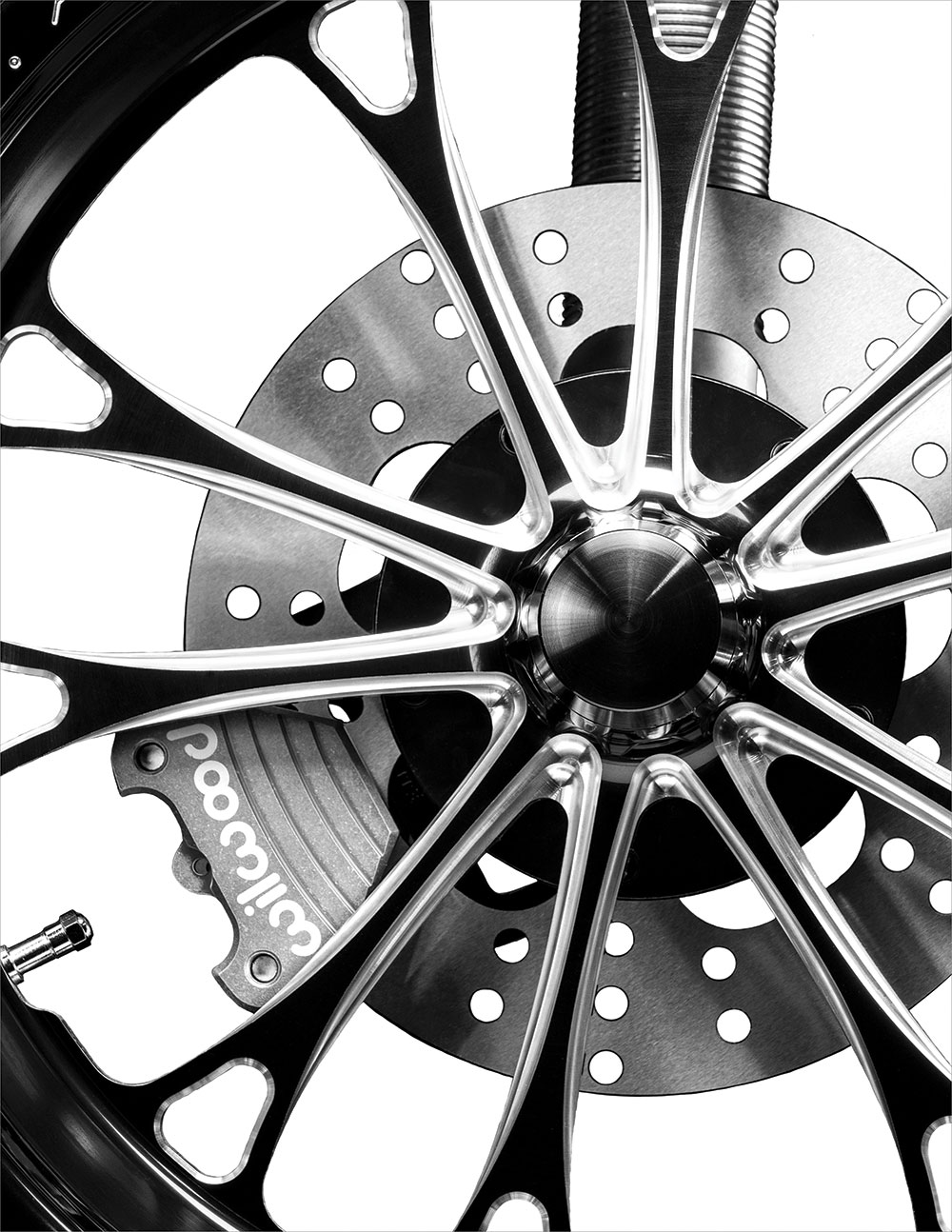
Racing innovations have even been used in military and aerospace applications. The unique experience of NASCAR stock cars on small-diameter wheels was directly applied to the brakes on legacy US military vehicles as they gained armor and weight. In addition, engineering done by motorsports builders for off-road racing has been applied to NASA space rovers crawling over Mars and the Moon.
Race car development is often incremental and evolutionary, so copying the winning setup of the front runners is an excellent way to get a car set up. That is, until someone leapfrogs the pack with an innovation that sends everyone back to the shop scratching their heads and playing catch-up.
Bryan Wood is the Technical Copywriter at Wilwood Engineering in Camarillo, California, where he works in the marketing department writing product briefs, press releases, and blog posts for its website. He has been a freelance contributor to various auto and motorcycle outlets for more than a decade. He occasionally competes in club-level endurance road racing events.
 MEMBERSHIP LOGIN
MEMBERSHIP LOGIN JOIN PRI
JOIN PRI
